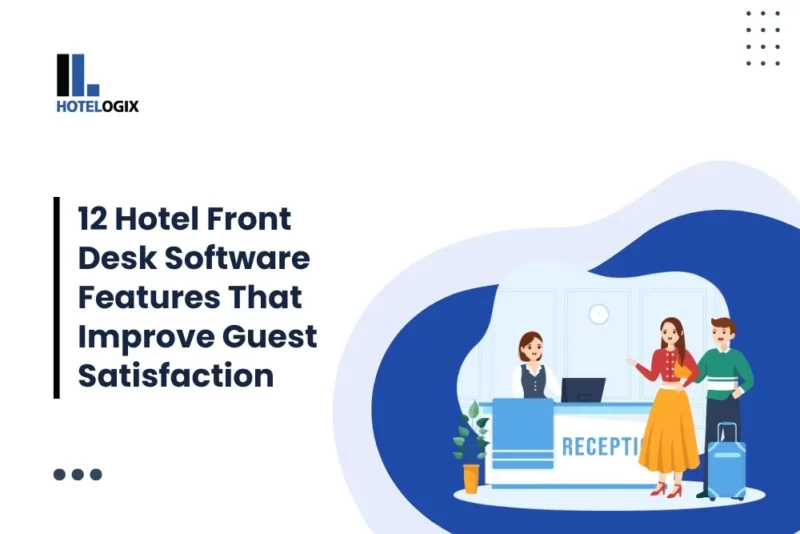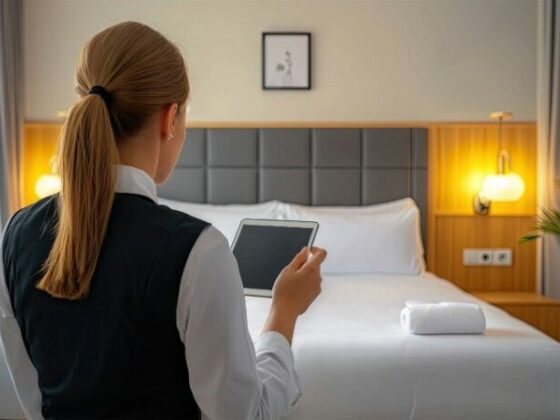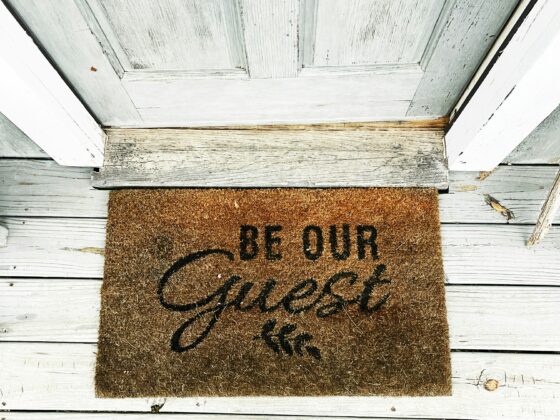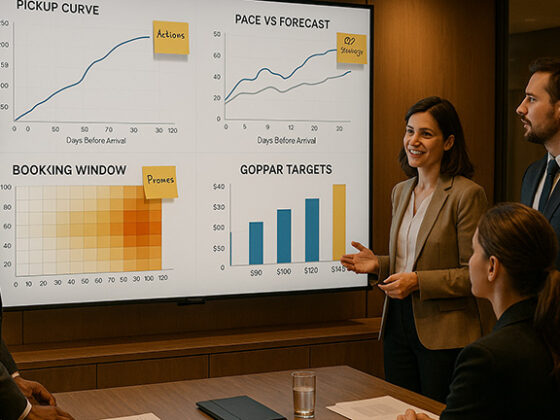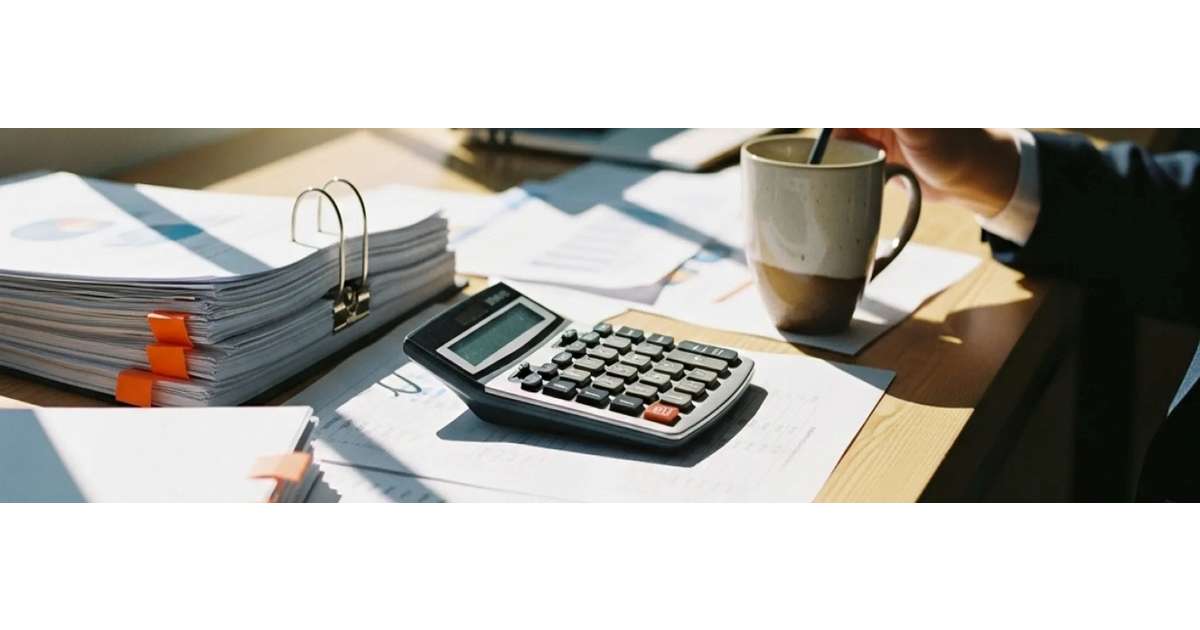
As a hotelier, you’ll know the frustration: you build a forecast you trust only to see actual results veer wildly off course.
Rooms go unsold because demand was overestimated or staff are stretched thin because occupancy was higher than expected. The consequences include missed revenue targets, wasted resources, unhappy guests and stressed teams.
That’s why measuring forecast accuracy matters.
One of the simplest and most effective ways to do this is with Mean Absolute Percentage Error (MAPE).
In this short guide, we’ll break down what MAPE is, why it matters for hotels of every size, how to calculate it, what ‘good’ looks like and most importantly, how you can use it to sharpen your forecasting and turn accuracy into a revenue management advantage.
What is MAPE and why should hotels care?
As noted above, MAPE stands for mean absolute percentage error. Put simply, it measures how accurate your forecasts are by comparing your predicted numbers to what actually happened.
It’s expressed as a percentage, which makes it easy to understand: the lower the percentage, the more accurate the forecast. For example, if you forecasted 100 hotel room nights and sold 95, your forecast error is small; if you sold only 70, your error is larger.
MAPE takes those differences across many days, weeks or months, and gives you one clear figure that shows how well your forecasting process is performing.
This is especially useful in hospitality because hotels are constantly making forecasts across multiple key metrics such as occupancy, average daily rate (ADR), revenue per available room (RevPAR), and even ancillary revenues like food and beverage.
Each of these areas can be influenced by seasonality, events, cancellations or unexpected market shifts. And with so many moving parts, hoteliers need a simple, reliable way to assess whether their forecasts are close to reality. Particularly those running smaller or independent properties without a full revenue management team.
That’s exactly what MAPE provides.
Accurate forecasting isn’t just a reporting exercise; it has real business impact. If your forecasts are consistently accurate, you can make sharper pricing decisions, adjusting rates with confidence rather than guesswork.
Staffing also becomes easier as you know when to schedule more team members at the front desk, in housekeeping or in food and beverage. And on a bigger scale, accurate forecasts lead to improved profitability by ensuring resources are aligned with demand and revenue opportunities aren’t left on the table.
In short, MAPE gives you a clear, actionable way to measure forecast accuracy – turning data into better decisions that directly improve your bottom line.
How to calculate MAPE
Used by statisticians in many fields, the formula for MAPE might appear slightly trickier than those usually associated with revenue management, but break it down and it’s actually fairly straightforward:
MAPE = (1/n) × Σ (|actual – forecast| ÷ Actual) × 100
Where:
- n = the number of data points (e.g. days, weeks or months you’re measuring)
- Actual = the real performance figure
- Forecast = the predicted figure
- Σ = the sum of the numbers in the curved brackets, as used when calculating simple means
- | (in a pair) = the absolute value of the difference, i.e. you should treat it as positive
In practice, it shows the average percentage difference between your forecast and reality.
Let’s take an example from our industry. Suppose you forecast 90 occupied rooms on a Saturday night but you actually sell 100. The error is 10 rooms. Dividing by the actual (100), the percentage error is 10%. Do the same for several days, then average the results, and you’ll have your MAPE.
Let’s take a three-night example:
- Forecast: 90; actual: 100 → error: 10%
- Forecast: 120; actual: 100 → error: 20%
- Forecast: 80; actual: 100 → error: 20%
MAPE = (10% + 20% + 20%) ÷ 3 = 16.7%
This means that on average, your forecasts were off by about 17%.
Common pitfalls to avoid
-
Zero actual values: if occupancy or revenue is zero, dividing by zero makes MAPE impossible. To avoid this, your options include:
– Excluding those data points from your calculation
– Using a small placeholder value instead of zero
– Considering an alternative accuracy measure, like mean absolute error (MAE) - Too few data points: one or two results won’t give a reliable picture, so use a consistent set, like a full month or season.
- Ignoring context: a high MAPE during unusual events (like a city-wide festival) doesn’t necessarily mean your overall forecasting process is poor.
What’s a good MAPE for hotels?
In forecasting, ‘good’ is always relative but having benchmarks helps.
Across industries, a MAPE of under 10% is often considered excellent, while 10–20% is generally acceptable.
For hotels, though, the reality can vary widely. Demand is influenced by factors like seasonality, local events, weather and even last-minute cancellations. Because of these variables, many hotels find themselves working with MAPEs in the 15–25% range.
What counts as acceptable depends heavily on your property type and situation.
A 50-room independent hotel in a seasonal destination might find that a 20% MAPE is the best they can achieve during peak months when demand is unpredictable. Meanwhile, a large city-center hotel with steady business travel may regularly achieve closer to 10–12%.
The forecasting method also matters; manual spreadsheets tend to produce higher MAPE, while revenue management systems can help reduce errors.
It’s also worth remembering that the goal isn’t to hit a perfect number; forecasting will never be flawless. What matters most is improvement over time.
If your MAPE was 28% last year and you’ve reduced it to 20%, that’s a meaningful gain. Even small improvements in accuracy can lead to smarter pricing, better staffing and stronger profitability.
In short, don’t obsess over perfection, instead aim for consistency, benchmark against your own past performance and focus on continuous progress.
How to use MAPE to improve hotel forecasting
Calculating MAPE isn’t just putting a number on past performance; it’s about learning where your forecasting process needs improvement.
By tracking MAPE consistently, you can spot patterns in when and where your forecasts tend to be weakest. For example, you may find that forecasts are fairly accurate midweek but far less reliable on weekends or that special events in your destination cause big spikes in error. These insights highlight exactly where you need to fine-tune your approach.
MAPE is also a powerful benchmarking tool.
Rather than comparing your performance against other hotels – which can be difficult, given differences in property size, market and systems – you can compare against yourself. Tracking MAPE month by month or season by season shows whether your forecasting is becoming more accurate over time. A steadily improving MAPE is evidence that your strategies, data inputs and perhaps even your technology choices are paying off.
For larger properties with revenue management systems, it provides an independent check on whether the system’s models are delivering reliable results.
For smaller or independent hotels, where forecasting might still be done with spreadsheets or basic property management system (PMS) reports, MAPE offers a simple but effective way to measure and refine accuracy.
The key is consistency: calculate MAPE regularly, track it the same way each time and use it to guide adjustments. In this way, MAPE turns into more than a number; it becomes a roadmap to stronger, more dependable forecasting.
Turn MAPE into a revenue management advantage
At its core, MAPE tells you how closely your forecasts match reality. But when you look beyond the number, it becomes a powerful tool for revenue management.
By understanding and improving MAPE, hotels can fine-tune their forecasts and use that accuracy to make sharper pricing and inventory decisions. If you know your forecasts are reliable, you can adjust rates confidently, open or close room types strategically, and manage restrictions without second-guessing.
MAPE also highlights where your revenue strategy may need work.
For example, consistently high forecast errors at the weekend could indicate you’re underestimating event-driven demand – or perhaps overestimating leisure stays. In this way, MAPE isn’t just about accuracy for its own sake; it’s a window into how well your revenue tactics are aligned with the market.
For hoteliers of all sizes, especially independents, using MAPE as part of regular reporting can turn forecasting into a competitive edge. By steadily improving forecast accuracy, you lay the groundwork for stronger pricing, better resource allocation and ultimately higher profitability.
About Lighthouse
Lighthouse is the leading commercial platform for the travel & hospitality industry.
We transform complexity into confidence by providing actionable market insights, business intelligence, and pricing tools that maximize revenue growth.
We continually innovate to deliver the best platform for hospitality professionals to price more effectively, measure performance more efficiently, and understand the market in new ways.
Trusted by over 70,000 hotels in 185 countries, Lighthouse is the only solution that provides real-time hotel and short-term rental data in a single platform. We strive to deliver the best possible experience with unmatched customer service. We consider our clients as true partners—their success is our success.
For more information about Lighthouse, please visit: https://www.mylighthouse.com.
Jonathan Gough
PR & Content Manager
Lighthouse

